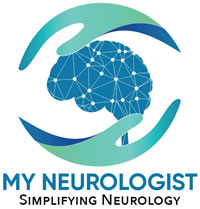What is Alexander Disease?
It is a type of leukodystrophy, a disease of white matter or the myelin of brain, spinal cord, and nerves. It is caused by a genetic defect of GFAP gene, leading to accumulation of GFAP protein in astrocytes (cells making the support structure for neurons of brain), leading to their destruction. This results in malfunctioning of brain. Destruction of white matter leads to formation of microscopic clumps called Rosenthal fibers.
Who is affected by Alexander disease?
It can appear at any age, but most cases appear in young children.
Is there any treatment for Alexander disease?
There is no cure, but symptoms can be treated. Gene therapy trials are underway.
What are clinical features of Alexander disease?
In type I disease, appearing before the age of 4:
. Seizures
. Motor and intellectual impairment
. Macrocephaly
. Stiff arms and legs
. Recurrent vomiting
In type II disease, appearing after the age of 4:
. Speech problems
. Dysphagia
. Ataxia
. Scoliosis
. Recurrent vomiting
How is Alexander disease diagnosed?
Physical examination and MRI brain can help. A gene test if available can confirm it. MRI brain reveals extensive confluent white matter pathology, which is more in frontal parts of brain.
What is the prognosis of Alexander disease?
It is a progressive illness resulting in severe disability and death.
Where can I find more information about Alexander disease?
American Academy of Pediatric Neurology Section
United Leukodystrophy Foundation
National Organization for Rare Disorders
Genetic and Rare Diseases Information Center


Leave a Reply
Your email is safe with us.
You must be logged in to post a comment.